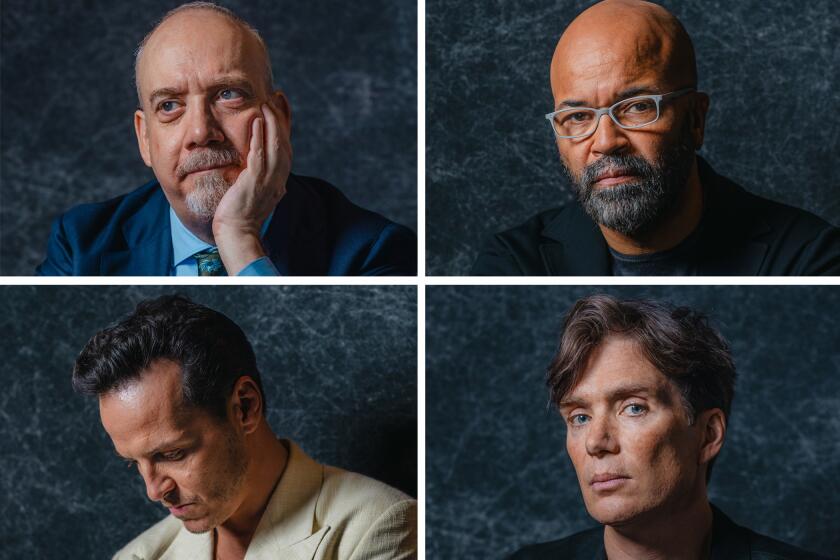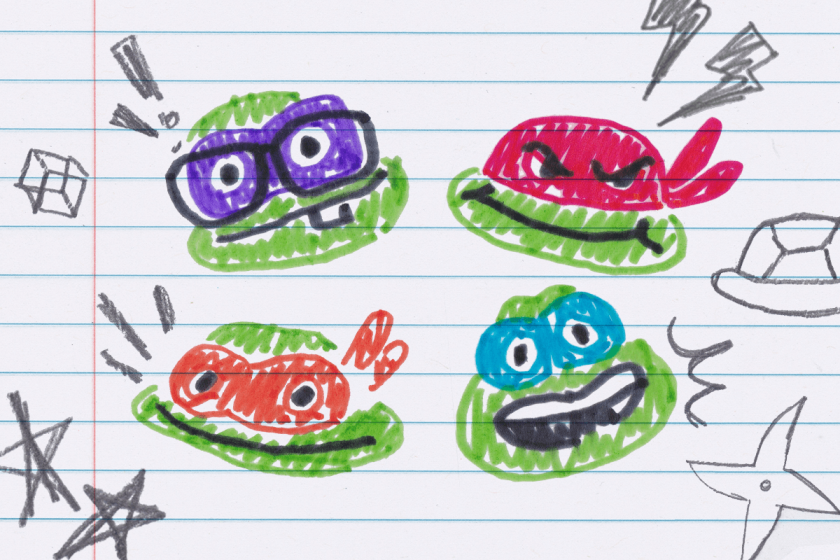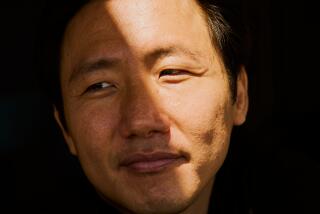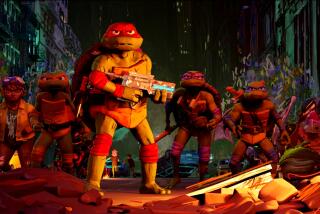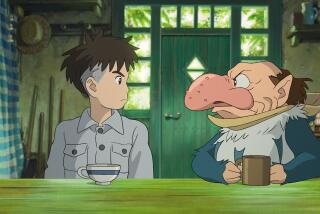Remembering these Ninja Turtles are still teenagers is the key to ‘Mutant Mayhem’
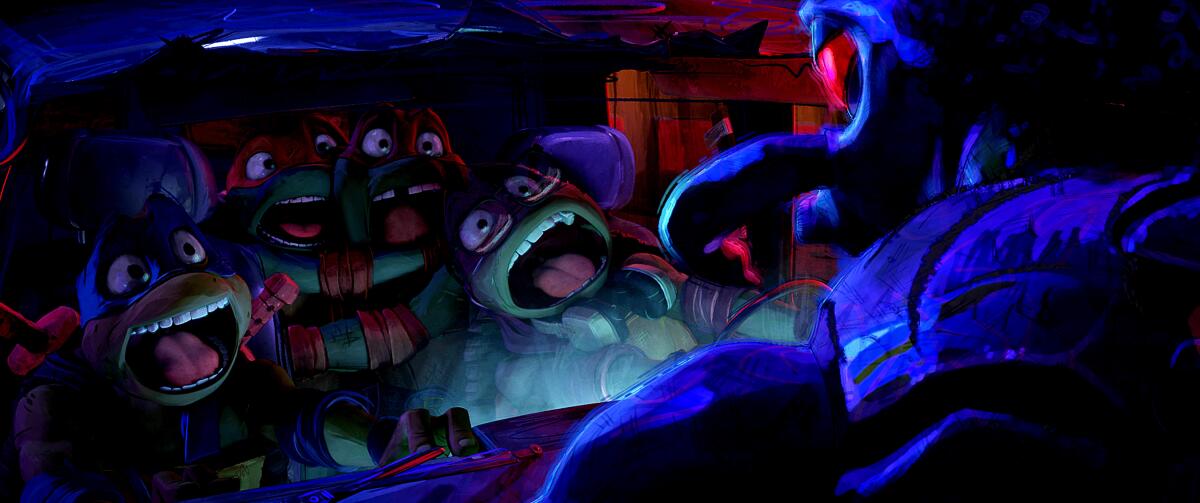
- Share via
The filmmakers’ mandate was clear: To put the “Teenage” back into these Mutant Ninja Turtles.
Jeff Rowe, director of “Teenage Mutant Ninja Turtles: Mutant Mayhem,” says, “I was never super into superheroes as a kid, Spider-Man excluded, because I couldn’t relate to the billionaire in a mansion with the dead parents or the man who was just born the strongest person in the universe. But there’s something about an actual teen, a kid like me, that seems flawed like myself, that becomes not only relatable, but also easy to root for. It was such a wonderful entry point that [co-writers and co-producers Seth Rogen and Evan Goldberg] gave this version of the film.”
Counterpoint: “I relate only to invincible super gods,” says Goldberg, presumably speaking from his Fortress of Solitude. “No, yeah, for Seth and me, we have an unofficial rule to always be making a high school movie, since that’s what gave us our big start,” adds Goldberg, who with Rogen was behind “Superbad” and “Joy Ride,” among others.
“We love the Ninja Turtles, but you could just tell it was a bunch of men doing kids’ voices. Especially with the Michael Bay[-produced] ones where it’s like these hulking, ‘roided-out 35-year-olds and we were just like, ‘Everyone leans into the “ninja” or the “mutants,” but they never lean into the “teenage.” ’ “

“Mutant Mayhem” is the seventh TMNT film, completely rebooting the franchise. That teen focus transforms it in the same way the Marvel Cinematic Universe’s “Spider-Man: Homecoming” transformed that super-franchise. Their novice-level heroics add a level of vulnerability not present in the other TMNT movies, just as teenage Spidey taking a climactic beatdown at the hands of a mature Vulture in “Homecoming” felt far more serious than any of his fights in the previous Sony movies.
There’s a high-school element (including changing human friend April, voiced hilariously by Ayo Edebiri, from their intrepid Lois Lane to a high-school journalism student). Their relationship with overprotective dad Splinter (Jackie Chan) becomes much more important. And casting Chan inspired the filmmakers to create a bona fide Jackie Chan fight scene for Splinter in the martial arts icon’s signature action-comedy style.
The dead-on voice casting benefits from seemingly endless cameos by Rogen and Goldberg’s famous friends, including Paul Rudd, Rose Byrne, Natasia Demetriou and Hannibal Buress as various mutants. Ice Cube drops the mic in a dominating — and very fun-sounding — turn as the big bad, Superfly.
Our BuzzMeter film experts are back to predict what Oscar voters will nominate in 10 Academy Awards categories. Vote in the online polls!
And of course, they cast younger actors as the turtle brothers and let them riff together in the studio to create a convincing brotherly bond.
“You can’t do teenagers’ dialogue without having them overlap, make fun of each other, call-back pop culture things; it would read false,” Goldberg says. “So we made sure to have them record together. There’s some jokes [they improvised] that are some of the best jokes in the movie. It was just them goofing around together.
“ ‘Bacon, egg and cheese.’ I can’t believe that happened. I think Seth was like, ‘Do an impersonation of a New Yorker,’ and then they did that for two and a half minutes. We just took that and put that in the film. It’s a single shot animated by two heroic animators and it’s un-writable comedy. You could never put that in a script and get that to work.”
- Share via
Video courtesy of Paramount Pictures
That accent on youth is also expressed in the film’s odd visual template, which resembles rough sketches animated with 3-D depth. Rowe, who co-directed the similarly irreverent and lively “The Mitchells vs. the Machines,” likens “Mutant Madness’ ” look to scribbles in a high-school notebook come to life (perhaps they were doused in the infamous ooze that mutated the turtles?).
“When you draw, when you’re a teenager, you don’t know what you’re doing yet,” he says. “You haven’t had formal art training, so it’s like you just make choices from the gut. They’re impassioned like, ‘I think an eye looks like this and there’s 150 eyebrow hairs above it and I need to draw all 150 eyebrow hairs.’ You haven’t learned to imply things with art, so you over-render things and you end up with something that is really passionate and expressive but fundamentally flawed and imperfect. And to me that’s kind of like a beautiful metaphor about the teenage experience when you’re like, ‘I’m invulnerable, invincible. I can do anything. I’m the smartest person who ever lived.’ And you don’t know anything! You’re 15 years old, but you can’t understand that.
“It made sense to have an art style as loose and free and expressive and kind of rule-breaking as the teenage experience.”
More to Read
From the Oscars to the Emmys.
Get the Envelope newsletter for exclusive awards season coverage, behind-the-scenes stories from the Envelope podcast and columnist Glenn Whipp’s must-read analysis.
You may occasionally receive promotional content from the Los Angeles Times.
